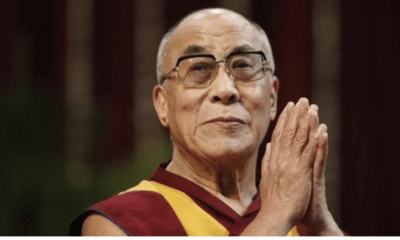
|
Getting your Trinity Audio player ready...
|
BJP has grown on the strength of its ideology, party structure and political accommodation
The BJP enters the 39th year of its inception today. The party celebrates April 6 every year as its Foundation Day. The ideological foundation of the party takes it back further by three decades to 1951. In May that year, the Bharatiya Jana Sangh, the ideological progenitor of the BJP, was born.
The face of the Indian polity would have been different had the Congress not transformed itself into a political party in 1947. During the independence struggle, the Congress became a platform for all the disparate political ideologies and groups because of the common objective of securing independence. Once that objective was achieved, different political groups had opted for different political paths to pursue their political goals. Propriety demanded that the Congress dissolved itself post-independence and allowed genuine competitive politics to blossom in India. Even Mahatma Gandhi had recommended that the Congress be disbanded as a political party and developed into Lok Sevak Sangh. The Congress leadership was unwilling to let go of the huge opportunity of presenting themselves before the people of the country as the ones who secured independence and reap the political benefits.
Gandhi died in 1948, while Subhash Chandra Bose had disappeared from the scene in 1945. Thus, there was nobody to challenge this thesis. It proved disadvantageous for the genuine flowering of a functional multi-party democracy in India. The Congress, with the image of “the party that secured independence,” became the dominant political force, leaving very little space for others to grow.
Thus, when the Bharatiya Jana Sangh was started in 1951, there wasn’t much scope in the country’s political arena for it to prosper. But then, the Jana Sangh had enjoyed a distinct advantage in the form of its umbilical relationship with the RSS. The RSS, founded by K B Hedgewar in 1925, was essentially a socio-political movement in the initial years until its character was gradually and thoughtfully transformed into that of a socio-cultural organisation by its second chief, M S Golwalkar, “Guruji”. Founded on the premise that the unifying factors of India are its age-old cultural and civilisational markers, the RSS had, in the first two decades, nurtured a constituency with roots in India’s cultural and civilisational value system.
The departure of Gandhi had left the Congress in the hands of leaders like Nehru who had no national moorings. They only had the legacy of the freedom struggle. The Communists were expanding their influence in the immediate aftermath of Independence, largely propelled by external developments in the USSR and China. The Jana Sangh became the rallying point for those who believed that India’s future was rooted in its own wisdom.
A distinct culture-centric ideology, cadre-based party structure and humility and flexibility in the leadership had led to the Jana Sangh’s quick rise in Indian polity. By 1967, its members were in power in a few states through SVD governments and it took another 10 years for them to have office at the Centre.
The Jana Sangh’s rise also led to the rise of a politics centred on India’s own cultural distinctiveness. In the Jana Sangh’s scheme of things, India was to be a parliamentary democracy, but with distinct Indian characteristics. “One Nation; One Culture; One People” became its ideological sheet anchor. Its motto of “Nation First” had led to the Jana Sangh merging in the Janata Party, while the same motivation led to its re-emergence in 1980 as the Bharatiya Janata Party.
The party has seen highs and lows in the last four decades. But what distinguishes it from other parties is that like the Jana Sangh, the BJP too has grown on the strength of its distinct ideology, cadre-based party structure and political accommodation. Today, it has massively expanded its organisational and political influence. Almost 75 per cent of the country is under its rule with a strong government at the Centre led by Prime Minister Narendra Modi.
Leader, cadre and parivar are the secret of its growth and success. It was the Vajpayee-Advani duo in the past and Modi-Shah in the present who provided able leadership to the party. Well-trained and motivated cadres form the grass roots strength of the party. The sangh parivar, an ideological fraternity of organisations, has always been a strength right from the Jana Sangh days. But the BJP’s strength has also been its political parivar — the alliance partners, some of whom have been there as all-weather partners.
In the last few decades, through these distinct advantages, the BJP has risen to occupy the national centrestage of Indian politics. Once condemned as an outcast and regarded as a fringe force, today it dominates every aspect of India’s political life. It is closer to its avowed objective of Congress-mukt Bharat. Congress-mukt Bharat is not about exclusivism. It is about achieving what Gandhiji had wanted to achieve in 1948, of bringing in a political culture that has roots in independent India and of promoting healthy political competition based on Indian genius.
As we close in towards that objective, many challenges surmount the party. From “One nation one people” of the Jana Sangh days to “Sab ka saath sab ka vikas” of Modi, the party stood for the oneness of the nation. Upholding it in a manner that is inclusive is the need of the hour.
(The article was originally published in Indian Express on April 6, 2018. Views expressed are personal)



